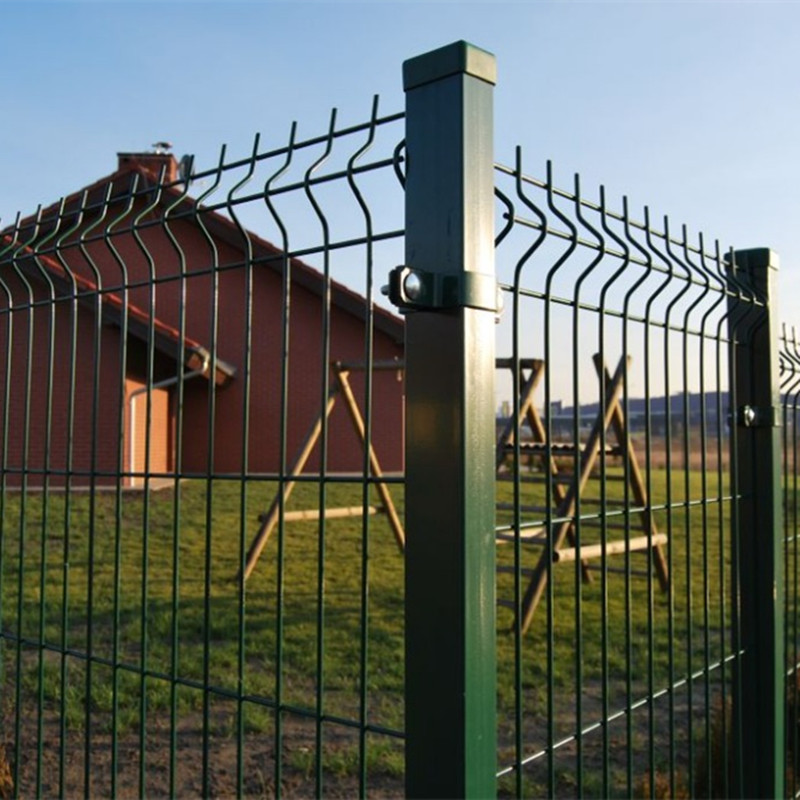Ağu . 12, 2024 20:56 Back to list
Exploring Various Types of Field Fencing for Effective Livestock Management and Property Boundaries
Types of Field Fences A Comprehensive Overview
Field fencing plays a crucial role in agricultural practices, livestock management, and property delineation. The right type of field fence can enhance security, manage grazing, and keep animals safely contained. With various options available, it’s important to choose a fencing style that meets specific needs. This article explores the most common types of field fences, their materials, and their suitability for different applications.
1. Barbed Wire Fencing
Barbed wire fencing is one of the most widely used types of field fencing, particularly in rural and agricultural settings. This type of fence consists of steel wire with sharp barbs evenly spaced along its length. Barbed wire is highly effective for containing livestock and deterring animal intrusions. It is durable, cost-effective, and requires minimal maintenance, making it a popular choice among farmers. However, it may not be suitable for all animals, especially those that can easily get injured on the sharp barbs.
2. Stock Fencing
Stock fencing, often referred to as sheep fencing, is designed specifically to contain sheep and other livestock. This type of fencing typically consists of vertical and horizontal wires, creating a grid-like structure. Stock fencing is rigid and generally 4 to 5 feet tall, providing a secure enclosure. It is more humane than barbed wire, as it eliminates the risk of injury to animals. Stock fencing is also versatile, with different wire configurations available to cater to specific livestock needs, including cattle, goats, and pigs.
3
. Electric FencingElectric fencing is gaining popularity due to its effectiveness in controlling animal movement and keeping predators at bay. This type of fence uses electric current to deter animals from breaching the boundaries. Electric fencing can be used alone or combined with traditional fencing materials for added security. It is particularly useful for containing large animals, such as cattle and horses, while being a versatile option for different terrains. However, it requires a power source and periodic maintenance to ensure proper functionality.
types of field fence

4. Welded Wire Fencing
Welded wire fencing consists of vertical and horizontal wires that are welded together at each intersection, creating a sturdy grid. This type of fencing is widely used for garden enclosures, small animal pens, and field perimeters. Welded wire fencing is durable and resistant to rust and corrosion, making it an excellent long-term investment. Its design allows for good visibility, which can enhance security and monitoring of livestock.
5. Vinyl Fencing
Vinyl fencing is an attractive and low-maintenance option that is becoming increasingly popular in both residential and agricultural settings. Unlike traditional wooden fencing, vinyl does not rot or require regular painting or staining. It is available in various styles and colors, allowing property owners to choose an aesthetic that suits their landscape. While not as sturdy as other options for livestock containment, vinyl fencing can be effective for smaller animals and as decorative boundaries.
6. Chain Link Fencing
Chain link fencing is a practical and versatile option for field fencing. Made from interwoven steel wire, chain link fences are strong and resistant to impact. They provide visibility while keeping animals contained and can be topped with barbed wire for added security. Chain link fences come in varying heights and can be coated with protective materials to resist corrosion, making them suitable for different climates.
Conclusion
Choosing the right type of field fence involves assessing specific needs, types of animals to be contained, and budget considerations. Barbed wire, stock fencing, electric fencing, welded wire, vinyl, and chain link fencing each have their unique advantages and applications. By understanding the characteristics of each type, property owners and farmers can make informed decisions that enhance their land management practices and ensure the safety of their livestock. Whether for practical or aesthetic purposes, the right field fence can make a significant difference in any agricultural setting.
-
358 Anti Climb Welded Wire Mesh Fence - Secure Perimeter Defense
NewsAug.02,2025
-
Durable Hot-Dip Galvanized Farm Field Wire Fence | Farm Security
NewsAug.01,2025
-
Temporary Fencing Solutions-Anping County Xingzhi Metal Wiremesh Products Co.,Ltd
NewsJul.31,2025
-
Hop Dipped Galvanized / PVC Coated Temporary Fence - Anping County Xingzhi Metal Wiremesh Products Co., Ltd.|Durable Temporary Fencing&Cost-Effective Security Solutions
NewsJul.31,2025
-
Hop Dipped Galvanized / PVC Coated Temporary Fence-Anping County Xingzhi Metal Wiremesh Products Co., Ltd|durable temporary fencing&corrosion-resistant solutions
NewsJul.31,2025
-
Temporary Fencing Solutions - Anping County Xingzhi Metal | Galvanized PVC Coated Fences
NewsJul.31,2025



